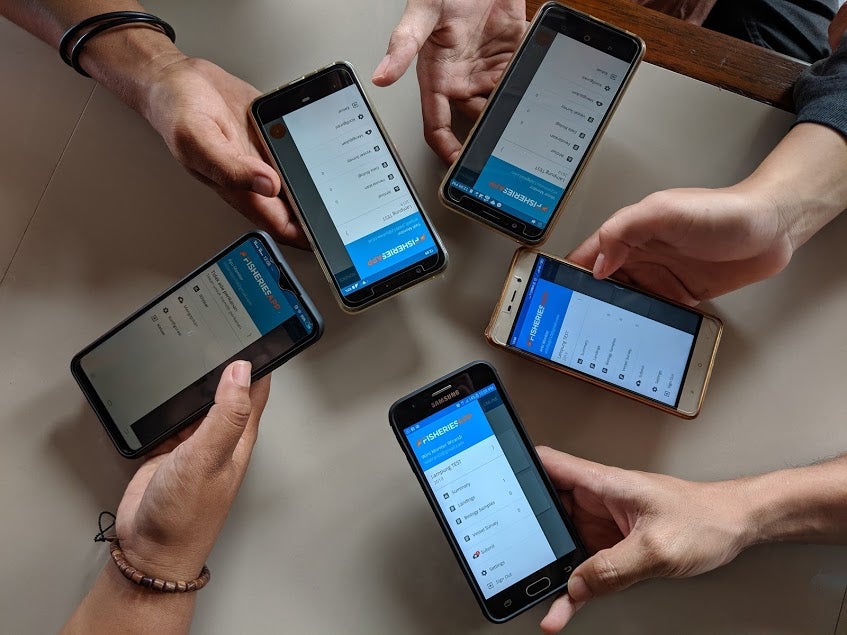
By Christopher Cusack and Harlisa
Small-scale fisheries are much bigger than you may have thought. They are fundamental to the food security, nutrition and economic well-being of hundreds of millions of people worldwide (the FAO estimates that 200 million people worldwide rely on small-scale fisheries for some part of their livelihood). Small-scale does not equal small catch. Globally, small-scale fisheries contribute about the same amount of food as larger fisheries — and they are becoming more significant. Most small-scale fishermen are located in the tropics, where climate change is set to have the most serious impacts on fish populations, so making sure tropical fisheries are managed effectively to ensure fish populations are as healthy as possible is becoming more urgent. Yet, a lack of fisheries management is compromising the sustainability of these critically important fisheries. This is why EDF is working with the Indonesian government and local stakeholders to improve the way small-scale fisheries are managed.
What most small-scale fisheries lack is data for management: what, where, when and how much is caught. Because the tools and resources for gathering that data have often been lacking, managing these fisheries is hard, but that doesn’t mean it can’t be done. In fact, new tools we need to help make small-scale fisheries management widespread and effective are fast becoming a reality — thanks to recent exponential advances in digital technologies.

The key to fisheries management is information — and one of the most important pieces of information is how much is being caught. Easy, right? In the United States and other developed countries, licenses are obtained, logbooks are filled out, and, in some fisheries, cameras and humans monitor catch onboard. But these tools don’t work everywhere, including in most small-scale fisheries. So, what does work? Smartphone apps such as FisheriesApp have proven successful at collecting and transmitting data to scientists — 1 in 3 people worldwide own a smartphone, after all. And while these apps can give us an idea of what each boat is catching, they aren’t very good at telling us how much was caught in total. For that, we are missing a key piece of the puzzle: how many boats are fishing?

That’s why EDF’s Smart Boat Initiative has been working with partners in Indonesia and the United States to develop a smart camera system (called “SmartPass”) that, placed at the entrance to ports or geographical “passes” that vessels must pass through, can automatically count and identify different types of vessels. SmartPass relies on an AI algorithm to do the counting instead of a human, and while the algorithm currently lives in the cloud, eventually it will live on the “edge” (in the camera system itself). Then, SmartPass will be able to transmit just vessel counts to managers, not video. In this way, smart camera systems like EDF’s SmartPass can help ensure a future of sustainable fisheries — by collecting the necessary information to track small-scale fisheries digitally, with little burden for individuals.
And we’re not just thinking about these high-tech tools and how they can help fisheries — we’re putting it into practice too. In September of this year, we completed our first proof of concept in the blue swimming crab fishery in Lampung province, Indonesia. The algorithm developed by our partners CVision AI counted a total of 513 vessels entering port compared to 527 by a human reviewer, and 316 leaving port compared to 315 by a human looking at the same images. Not bad, given a limited dataset. But, these results don’t capture all aspects of algorithm performance, and more work needs to be done to ensure it is reliable, and to figure out exactly how accurate it can be and under what conditions.
 What we do know is that technologies like SmartPass have a fundamental role to play in sustaining small-scale fisheries, which are critically important for securing livelihoods in the face of climate change. And while many other pieces need to fall into place to achieve sustainable fisheries — like increasing the support and capacity of management institutions — there is no doubt that new technologies are making this task easier.
What we do know is that technologies like SmartPass have a fundamental role to play in sustaining small-scale fisheries, which are critically important for securing livelihoods in the face of climate change. And while many other pieces need to fall into place to achieve sustainable fisheries — like increasing the support and capacity of management institutions — there is no doubt that new technologies are making this task easier.









